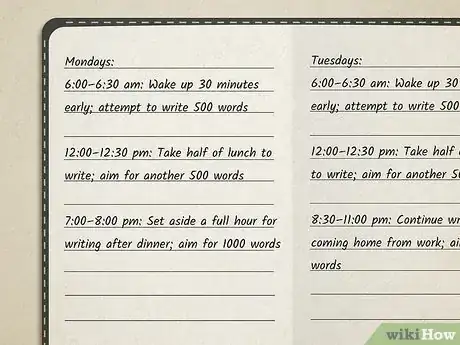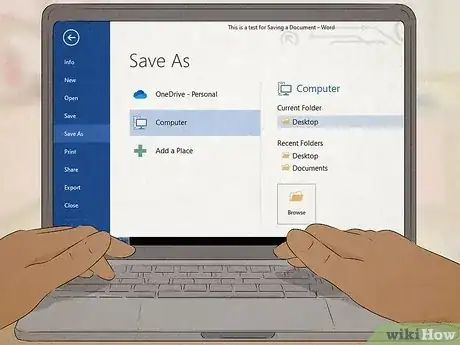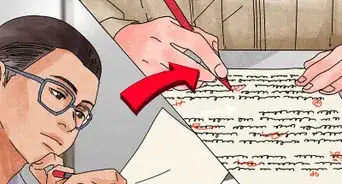This article was co-authored by Grant Faulkner, MA. Grant Faulkner is the Executive Director of National Novel Writing Month (NaNoWriMo) and the co-founder of 100 Word Story, a literary magazine. Grant has published two books on writing and has been published in The New York Times and Writer’s Digest. He co-hosts Write-minded, a weekly podcast on writing and publishing, and has a M.A. in Creative Writing from San Francisco State University.
wikiHow marks an article as reader-approved once it receives enough positive feedback. In this case, several readers have written to tell us that this article was helpful to them, earning it our reader-approved status.
This article has been viewed 229,297 times.
Light novels, a form of Asian young adult literature (ライトノベル raito noberu or ラノベ ranobe for short), is a great route to take for storytellers of the anime-loving community. Light novels are primarily Japanese, but are also published in Taiwan and China. They can span from the size of an average novella (20,000 words) to the average American novel (50,000). Many well-known anime such as the "Melancholy of Haruhi Suzumiya" are based from popular "ranobe", and the industry is ever growing. So if you want to learn how to write one, you've come to the right place.
Steps
Understanding how light novels are written
-
1Read a light novel. As with any creative endeavour, if you want to get started on writing a light novel, you should read and analyze one first.[3]
- Light novels have been released in the United States by Yen Press, Del Rey Manga and Tokyopop (the latter of the three has been defunct since 2006), so pick a light novel (or a series of them) and analyze the writing style.
-
2Expect to encounter a lot of dialogue. Light novels rely heavily on dialogue, so look at quotes from the characters, and get a feel for the characters' speaking styles. However, keep in mind what kind of audience you want your book to appeal to.[4]
- If your audience is Western, don't spend your whole time writing just dialogue and no description. This will easily confuse your average American viewer (though this may be different for readers in other countries). Readers may lose track of who is speaking if there is no description present.
-
3Try to cater to more than one demographic. For example, if you are just writing for avid anime fans, an average American reader (who may not even watch anime) probably won't understand the jokes you lace into the text unless they have prior knowledge of Japanese culture.[5] This is a fatal flaw for many Original English Language "ranobe," as the majority of people will be confused by them, and they won't sell.
Planning your light novel
-
1Plan out your light novel. Of course, every great novel comes from an idea, and light novels are no exception.[6] Try a question you want to write about, and one that you feel you can answer. To use "Haruhi Suzumiya" as an example, what if the world can be changed by one person and that person just doesn't know it? Make sure there is a point to your plot. And don't forget your characters. Every novel, light or not, has characters (each with their own point of view) as well as a setting, plot and theme.
-
2Set a schedule. Give yourself time to write, but don't force yourself to write when you have no ideas; if you have writer's block, give yourself time to gather your thoughts. Write up a schedule of days when you have free time on your hands, and write your heart out onto the pages, as with any novel.
Writing the light novel
-
1Write your first draft. Sure, the first draft is full of mistakes and spelling / grammatical errors, but at least it exists, right? Besides, the first draft is just that — a draft.[7] You can always edit it at your own pace, as much as you want. And after constant re-tooling, you have your first chapter. After that, do the same with the remaining chapters, until you think they're good enough to be read, if not published (yet). If you don't think your draft is something that you yourself would pick from a bookstore shelf, then it needs work.
-
2Maintain continuity. Continuity is the consistency, as well as the flow, of the light novel when it comes to information, events, or just about anything in your light novel. Make sure you jot down major events in your story to keep for reference if you don't have the time to look back through your book every now and then.
-
3Save your writing in a computer. If you write your "ranobe" on your computer using a word processor, then you just need to save the draft. For those writing "ye olde-fashioned way," copy your draft from the paper you used to write it on and save your light novel onto a computer (and proofread using the processor's spell-check).
-
4Once the document is saved, add the images previously drawn by either yourself or a hired artist. These will be mostly without dialogue, as your "ranobe" will most likely relay what the characters have said. Add these images in the center of the action, in order to properly illustrate the scene. Save the file.
Community Q&A
-
QuestionCan I publish a novel if I am still a minor?
 Community AnswerYes, there is no age requirement for publishing a novel, though you may need an adult to go through and sign paperwork for you if you get a contract with a publishing company.
Community AnswerYes, there is no age requirement for publishing a novel, though you may need an adult to go through and sign paperwork for you if you get a contract with a publishing company. -
QuestionDoes a light novel need pictures in it apart from those on the cover?
 Community AnswerNo. But pictures may give the reader a better understanding of the novel's characters, setting, plot, etc.
Community AnswerNo. But pictures may give the reader a better understanding of the novel's characters, setting, plot, etc. -
QuestionHow expansive should the plot be in a light novel?
 Community AnswerYou should plan a few different, easily resolved ideas for your plot. The ideas don't need to be big, just two or three paragraphs on two or three ideas. Once you're done, select which one looks the best out of the lot. Ask some friends or someone that knows a bit about Anime/Manga/Light Novels for their opinion on your ideas too.
Community AnswerYou should plan a few different, easily resolved ideas for your plot. The ideas don't need to be big, just two or three paragraphs on two or three ideas. Once you're done, select which one looks the best out of the lot. Ask some friends or someone that knows a bit about Anime/Manga/Light Novels for their opinion on your ideas too.
Warnings
- Despite what was previously stated in this article, don't limit yourself to a strict word count each day, but do schedule a time for whenever you are free to write. Write whenever you can, and let your imagination soar.⧼thumbs_response⧽
- Don't obsess over a chapter. Remember that you can come back to it in the revision stage.⧼thumbs_response⧽
- Do not plagiarize. Said this, do not feel too constrained in trying something already present in other novels; just don't copy and paste content to save work.⧼thumbs_response⧽
- Keep in mind that if you want to write stories professionally you have to work a lot for documentation, character creation and keeping the plot fresh. Do not expect that half-minded attempts will gain recognition.⧼thumbs_response⧽
Things You'll Need
- A pen/pencil
- A notebook or two; try cases in which you can store materials
- A computer, preferably a laptop
- A light novel (The Melancholy of Haruhi Suzumiya is a great start)
- Documentation (every material you need to write a convincing plot)
References
- ↑ https://www.animenewsnetwork.com/feature/2016-10-19/what-a-light-novel/.107843
- ↑ https://comicbook.com/anime/news/whats-the-difference-between-manga-light-novels/#2
- ↑ https://blog.reedsy.com/how-to-write-a-novel/
- ↑ https://www.animenewsnetwork.com/bbs/phpBB2/viewtopic.php?t=2818928
- ↑ https://www.animenewsnetwork.com/bbs/phpBB2/viewtopic.php?t=2818928
- ↑ https://blog.reedsy.com/how-to-write-a-novel/
- ↑ https://nybookeditors.com/2017/01/guide-writing-novel-one-year/
- ↑ https://www.janefriedman.com/13-most-common-self-publishing-mistakes-to-avoid/
About This Article
Light novels are a form of Asian young adult literature and are usually between 20,000 and 50,000 words long. If you want to write one, you’ll need to come up with some interesting characters as well as a unique plot for your story. For instance, the popular light novel “Haruhi Suzumiya” answers the question: “What if the world can be changed by one person and that person doesn’t know it?” Coming up with a unique premise like this will bring your light novel to life! Light novels rely heavily on dialogue, so make sure to include plenty of conversations between characters in your story. Once you have a good draft down, go over it a few times to make sure everything is consistent and flows well. To learn how to get your light novel published, read on!







































































